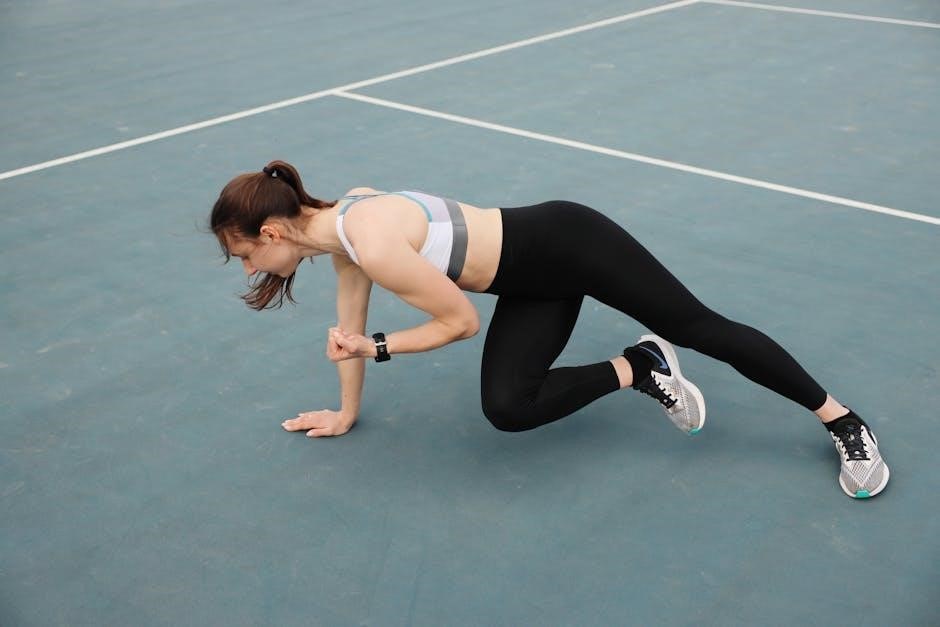A comprehensive UCL Exercises PDF guide provides structured workouts for rehabilitation, focusing on strengthening, mobility, and injury prevention. It includes detailed routines and visual instructions for optimal recovery.
Overview of UCL Injuries
UCL injuries, affecting the ulnar collateral ligament, are common in athletes involved in repetitive throwing or overhead activities. These injuries range from partial tears to complete ruptures, often causing elbow pain, instability, and limited mobility. They can result from acute trauma or gradual wear and tear due to repetitive stress. Symptoms include persistent pain during throwing, swelling, and reduced strength. Accurate diagnosis is crucial, often involving physical exams and imaging. Understanding the severity of UCL injuries is key to developing effective treatment plans, whether through conservative rehabilitation or surgical intervention. Early detection and appropriate management are vital to prevent further damage and ensure a successful recovery.
Importance of Exercise in UCL Rehabilitation
Exercise plays a critical role in UCL rehabilitation by promoting healing, restoring function, and preventing further injury. Controlled stressors and progressive resistance exercises help strengthen the ligament and surrounding muscles, enhancing stability and flexibility. Early mobilization and strengthening routines are essential to avoid stiffness and improve range of motion. These exercises also address secondary issues, such as scapular and shoulder imbalances, which are common in UCL injuries. A well-structured exercise program can reduce pain, minimize swelling, and restore athletic performance, particularly for individuals returning to throwing or overhead activities. Consistency and proper progression are key to achieving optimal outcomes and preventing re-injury.
Benefits of Using a PDF Guide for UCL Exercises
A UCL Exercises PDF guide offers a convenient and accessible resource for rehabilitation. It provides clear, visual instructions and demonstrations, making it easier for patients and therapists to follow structured routines. The guide often includes progression criteria, ensuring exercises are advanced safely and effectively. Portable and easy to reference, a PDF guide allows for consistent practice at home or in clinical settings. It also serves as a tracking tool for rehabilitation milestones, helping users monitor their progress. By organizing exercises into categories like mobilization, strengthening, and advanced drills, a PDF guide streamlines the recovery process, ensuring a comprehensive and efficient approach to UCL rehabilitation.
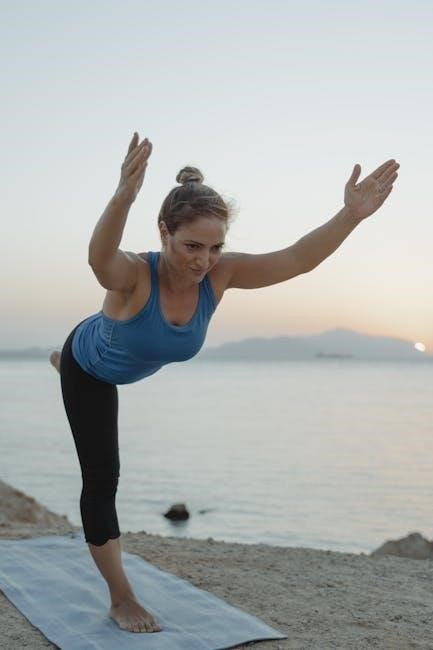
Types of UCL Injuries
UCL injuries are categorized into partial and complete tears. Partial tears involve incomplete ligament damage, while complete tears result in a full rupture, often requiring surgical intervention.
Partial UCL Tears
A partial UCL tear involves incomplete damage to the ligament, often causing pain during throwing or repetitive arm movements. Nonoperative treatment is typically preferred, focusing on strengthening exercises, low-load stretches, and scapular stabilization. Early mobilization and controlled stressors are emphasized to promote healing without surgery. Rehabilitation protocols may include wrist flexion/extension, supination/pronation, and radial/ulnar deviation exercises to improve joint stability. Progression is criterion-based, with gradual increases in resistance and difficulty. The goal is to restore strength, endurance, and neuromuscular control, allowing athletes to return to their sport safely. Compliance with rehab protocols and avoiding aggravating activities are crucial for successful recovery.
Complete UCL Tears
A complete UCL tear involves a full rupture of the ligament, often requiring surgical reconstruction. Postoperative rehabilitation focuses on restoring strength, stability, and function. Protocols typically include controlled stressors and progressive resistance exercises, with early initiation of weight-bearing activities. Exercises such as the Throwers Ten Program, biceps/triceps exercises, and plyometric drills are commonly incorporated. Use of a hinged elbow brace is standard, with gradual increases in range of motion and resistance. The goal is to enable athletes to return to full sports participation, such as competitive cheerleading or throwing sports, within 3-4 months. Compliance with rehab timelines and avoiding overloading the elbow are critical for successful recovery and preventing re-injury.
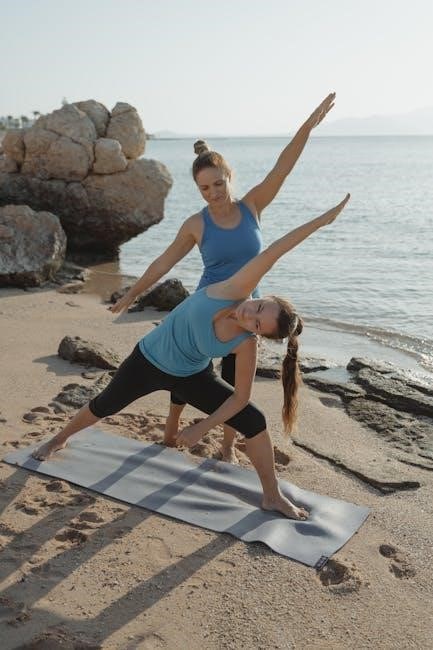
Role of Exercises in UCL Rehabilitation
Exercises play a crucial role in restoring strength, stability, and function after UCL injuries. They promote healing, improve mobility, and prevent further damage through controlled stressors and progressive resistance.
Nonoperative Rehabilitation
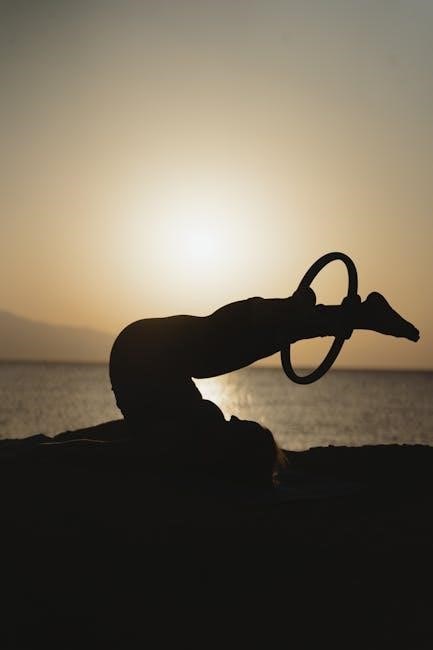
Nonoperative rehabilitation for UCL injuries focuses on a criterion-based progression program tailored to individual needs. The primary goals include decreasing inflammation, improving range of motion (ROM), and minimizing pain and swelling. Early stages involve passive elbow ROM exercises, soft tissue mobilizations, and the use of a hinged elbow brace to protect the ligament. Patients progress through phases based on their compliance, tissue quality, and injury severity. Strengthening exercises for the elbow flexors and extensors, as well as scapular and core stability, are introduced gradually. Wrist exercises, such as flexion/extension and supination/pronation, are also incorporated to enhance overall arm function. A structured UCL exercises PDF guide ensures clarity and adherence to the rehabilitation protocol, promoting a safe and effective recovery process.
Postoperative Rehabilitation
Postoperative rehabilitation following UCL reconstruction involves structured protocols to ensure proper healing and functional restoration. Surgical techniques like the figure of 8 (modified Jobe procedure) and the docking procedure guide the rehabilitation process. Controlled stressors and progressive resistance exercises are applied to promote ligament healing. Early weight-bearing exercises are initiated, increasing in difficulty and duration, with the goal of returning to full sports participation within 3-4 months. Traditional rehabilitation focuses on shoulder and scapular strengthening, along with wrist exercises like flexion/extension and supination/pronation. A comprehensive UCL exercises PDF guide provides detailed instructions, timelines, and goals for postoperative care, ensuring a safe and effective recovery process tailored to the athlete’s needs.
Exercise Categories for UCL Rehabilitation
UCL rehabilitation exercises are categorized into early mobilization, strengthening, and advanced drills. These structured routines aim to restore flexibility, build strength, and enhance functional movement progressively.
Early Mobilization Exercises
Early mobilization exercises focus on restoring elbow range of motion and reducing stiffness post-injury or surgery. Gentle wrist and forearm movements, such as flexion, extension, and pronation, are often included. Passive elbow extensions and soft tissue mobilizations are commonly prescribed to enhance flexibility. These exercises are typically performed with a hinged elbow brace, gradually increasing the range by 10 degrees weekly. The goal is to minimize pain and swelling while promoting healing. Patients are encouraged to perform these exercises consistently, as early mobilization is crucial for preventing long-term stiffness and preparing the joint for more advanced strengthening phases later in rehabilitation.
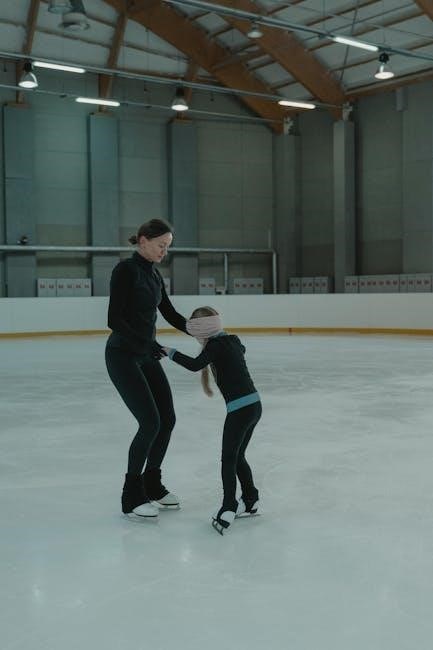
Strengthening Exercises
Strengthening exercises are essential for restoring elbow and forearm function after a UCL injury. These exercises target the flexors, extensors, and rotators of the elbow and wrist. The Throwers Ten Program is commonly used, focusing on biceps curls, triceps extensions, and wrist supination/pronation. Resistance bands or light weights are often incorporated to build strength and endurance. Progression to advanced drills, such as plyometric throwing exercises, helps improve power and neuromuscular control. Strengthening exercises are typically introduced after the initial healing phase, with a gradual increase in intensity to avoid overloading the ligament. Consistency and proper form are critical to ensure effective rehabilitation and prevent re-injury.
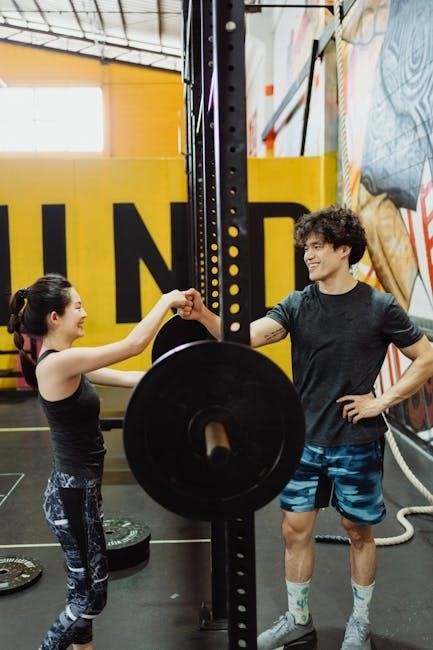
Advanced Drills and Plyometrics
Advanced drills and plyometrics are introduced in later stages of UCL rehabilitation to enhance power, speed, and functional movement. These exercises mimic sports-specific actions, such as throwing or overhead motions, to prepare the athlete for return to play. Plyometric exercises, like single-arm plyometric throws and medicine ball drills, are typically incorporated around weeks 10-12 of rehabilitation. These high-intensity movements improve neuromuscular control and explosive strength. Progression is gradual, ensuring the athlete can handle increased stress on the UCL without discomfort. Proper form and technique are emphasized to avoid re-injury. These drills are crucial for bridging the gap between strengthening exercises and full sports participation, ensuring a safe and effective return to activity.
Creating a Comprehensive UCL Exercises PDF Guide
A well-structured UCL Exercises PDF includes detailed visual instructions, progression criteria, and timelines. It ensures clarity and safety, catering to varying rehabilitation needs and goals effectively.
Elements of an Effective Exercise Guide
An effective UCL Exercises PDF guide should include clear, step-by-step instructions for each exercise, ensuring proper form and technique. It should incorporate visual aids like diagrams or photos to demonstrate movements accurately. Additionally, the guide must outline specific goals and progression criteria, allowing individuals to track their improvement. Including timelines helps users stay on schedule, while safety precautions prevent overexertion. A well-organized layout enhances readability, making the guide user-friendly. By addressing these elements, the PDF ensures a safe and efficient rehabilitation process tailored to individual needs, promoting optimal recovery and return to activity.
Visual Instructions and Demonstrations
Visual instructions and demonstrations are crucial in a UCL Exercises PDF guide, as they help users understand proper form and technique. High-quality images, diagrams, or videos should accompany each exercise, detailing starting positions, movements, and endpoints. Clear visual cues, such as arrows or highlighted muscle groups, can enhance comprehension. Step-by-step photos or screenshots from videos ensure that complex movements are broken down into manageable parts. For example, exercises like resisted wind-up drills or plyometric throws can be better understood with visual guidance. This approach minimizes the risk of incorrect form, reduces injury potential, and ensures exercises are performed effectively. Visual aids also cater to different learning styles, making the guide more accessible and user-friendly.
Progression Criteria and Timelines
Progression criteria and timelines in a UCL Exercises PDF guide ensure a structured and safe rehabilitation process. Phases are typically divided into early mobilization, strengthening, and advanced drills, with specific goals for each stage. For example, the first 0-2 weeks focus on reducing inflammation and improving ROM, while weeks 4-6 emphasize strengthening exercises like the Throwers Ten Program. By weeks 10-12, athletes progress to plyometric drills and high-speed throws. Progression is based on achieving specific milestones, such as pain-free movement, full ROM, and adequate strength. Timelines may vary depending on injury severity and individual recovery rates. Adhering to these criteria ensures a gradual and effective return to activity, minimizing the risk of re-injury and optimizing outcomes.
Exercise Progression and Monitoring
Exercise progression and monitoring are crucial for safe and effective UCL rehabilitation. Criteria-based advancements ensure activities align with recovery milestones, preventing overload and promoting optimal healing.
Criterion-Based Progression
Criterion-based progression ensures rehabilitation advances based on measurable goals, such as strength, pain levels, and range of motion. This approach prioritizes individual recovery pace, avoiding rigid timelines. Patients progress when specific criteria are met, such as achieving full elbow mobility or demonstrating pain-free strength. Factors like age, injury severity, and compliance influence progression rates. Controlled stressors and progressive resistance exercises are applied to enhance tissue resilience without overloading. This method minimizes risks of re-injury while optimizing functional recovery. Clear benchmarks guide clinicians and patients, ensuring a structured and adaptive path toward full rehabilitation and return to activity.
Tracking Rehabilitation Milestones
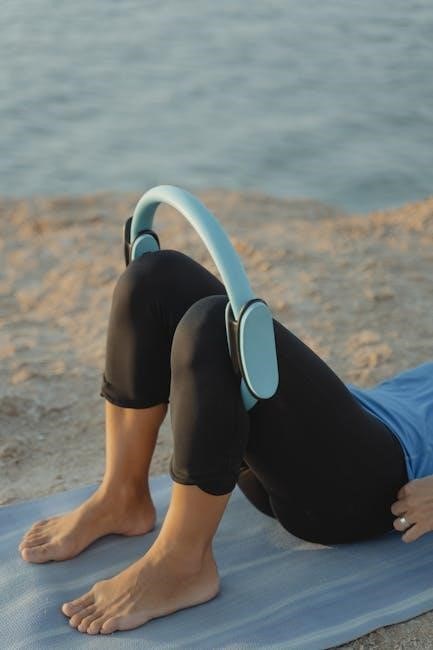
Tracking rehabilitation milestones is essential for monitoring progress and ensuring a safe return to activity. Key metrics include pain levels, strength, and range of motion. Regular assessments help identify improvements or plateaus, guiding adjustments to the exercise program. A structured UCL Exercises PDF guide often includes checklists or logs for documenting progress. Patients and clinicians can track achievements, such as regaining full elbow mobility or advancing to higher resistance levels. Visual instructions and clear timelines in the guide aid in understanding expectations. By focusing on measurable milestones, individuals can stay motivated and ensure they are meeting rehabilitation goals effectively. This systematic approach supports long-term recovery and performance.
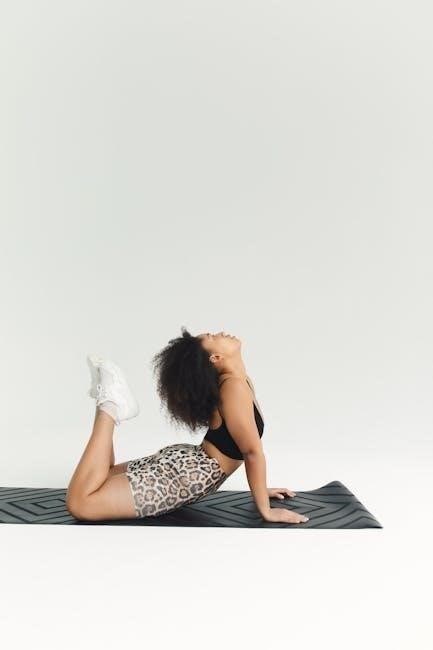
Safety and Precautions
Ensure proper warm-up and avoid overexertion to prevent further injury. Use protective gear like elbow braces and follow guidelines to minimize strain during exercises.
Common Mistakes to Avoid
When following a UCL exercises PDF, avoid overexertion, as it can worsen injuries. Ignoring pain during workouts is a common mistake; stop immediately if discomfort arises. Improper form and rushing through exercises can lead to poor results or further damage. Neglecting to warm up or cool down is another oversight, as it increases injury risk. Additionally, skipping recommended rest periods can hinder recovery. Always consult a professional before starting any program, especially post-surgery or with severe tears. Adhere strictly to the guidelines to ensure safety and effectiveness.
When to Seek Medical Attention
Seek immediate medical attention if you experience severe pain, swelling, or limited elbow mobility. Persistent pain during or after exercises, numbness, or tingling in the arm or hand are red flags. If you notice significant weakness or instability in the elbow, consult a healthcare provider. Additionally, if symptoms worsen despite rest and rehabilitation, professional evaluation is crucial. Ignoring these signs can lead to further injury or prolonged recovery. A healthcare professional can assess the severity of the UCL injury and recommend appropriate treatment, whether nonoperative or surgical. Early intervention ensures the best outcomes for recovery and return to activity.
Case Studies and Success Stories
Real-life applications of UCL exercises have enabled athletes to return to sports successfully. Detailed success stories highlight the effectiveness of structured rehabilitation programs in achieving full recovery.
Real-Life Applications of UCL Exercises
A competitive cheerleader with a UCL injury successfully returned to sports using a structured UCL Exercises PDF guide. The program included weight-bearing exercises, progressing in difficulty and duration, enabling her to resume advanced tumbling within three months. The guide’s visual instructions and clear progression criteria ensured adherence and optimal recovery. Similar success stories highlight how structured rehabilitation protocols, including strengthening and mobility exercises, have helped athletes regain full function and return to their sports. These real-life applications demonstrate the effectiveness of comprehensive exercise guides in facilitating successful UCL rehabilitation and preventing future injuries.
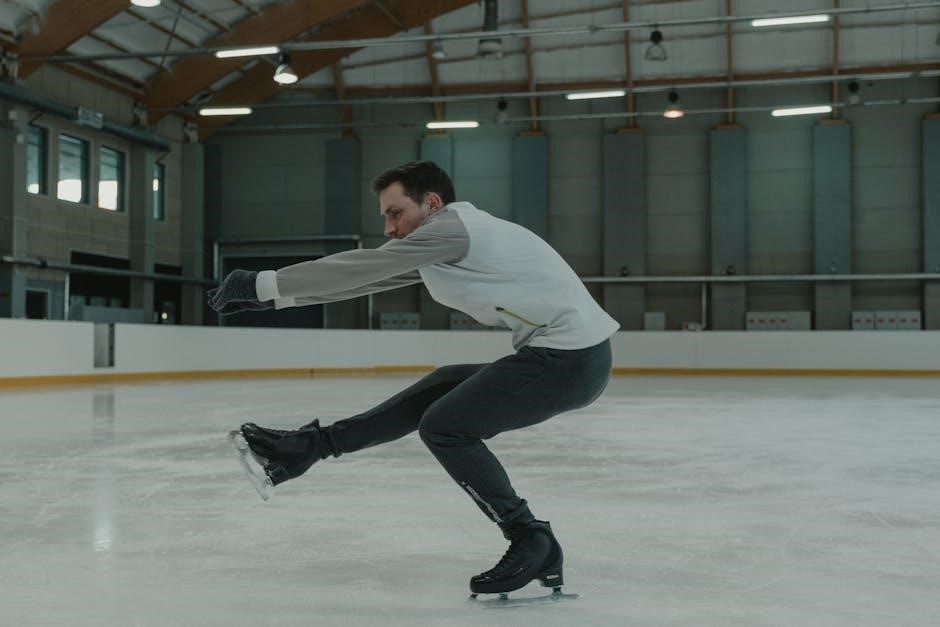
Conclusion
The UCL Exercises PDF serves as a vital tool for effective rehabilitation, offering structured routines and visual guidance to ensure a successful recovery and return to activity.
Final Thoughts on UCL Rehabilitation
Consistent practice and patience are key to successful UCL rehabilitation. A well-structured UCL Exercises PDF guide ensures a progressive and safe approach to recovery. Incorporating exercises like the Throwers Ten Program and plyometric drills can enhance strength and functionality. Monitoring progress and avoiding overloading are crucial to prevent setbacks. The guide’s visual instructions and detailed timelines help athletes and therapists stay aligned. While the PDF is an invaluable resource, it should complement professional guidance. By adhering to the outlined protocols, individuals can effectively restore elbow stability and return to their activities. Remember, rehabilitation is a journey requiring dedication and careful adherence to prescribed routines.
Encouragement for Consistent Practice
Consistency is the cornerstone of successful UCL rehabilitation. Staying committed to the exercises outlined in the UCL Exercises PDF ensures steady progress and minimizes the risk of setbacks. Celebrate small milestones, like increasing range of motion or strength, to stay motivated. The guide’s structured approach helps maintain discipline, even when progress feels slow. Remember, every repetition and session brings you closer to full recovery. Share your goals with a therapist or teammate for added accountability. By prioritizing regular practice, you’ll rebuild resilience and confidence, paving the way for a strong return to your activities. Keep pushing forward—consistent effort leads to lasting results.
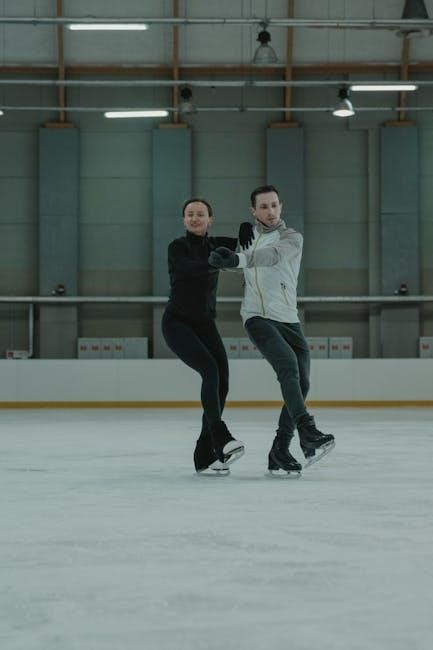
Additional Resources
Explore Rehab to Throw Like a Pro for detailed UCL exercises and recovery strategies. Visit overheadathletics.com and rehabscience.com for expert guidance and downloadable resources.
Recommended Reading and Websites
For in-depth guidance, consider “Rehab to Throw Like a Pro: The Clinician’s Guide”, offering detailed UCL exercises and recovery strategies. Visit overheadathletics.com for expert protocols and rehabscience.com for newsletters and resources. These sources provide evidence-based approaches, ensuring safe and effective rehabilitation. They cater to both clinicians and athletes, promoting optimal recovery and performance. Utilize these resources to enhance your understanding and implementation of UCL rehabilitation techniques.
